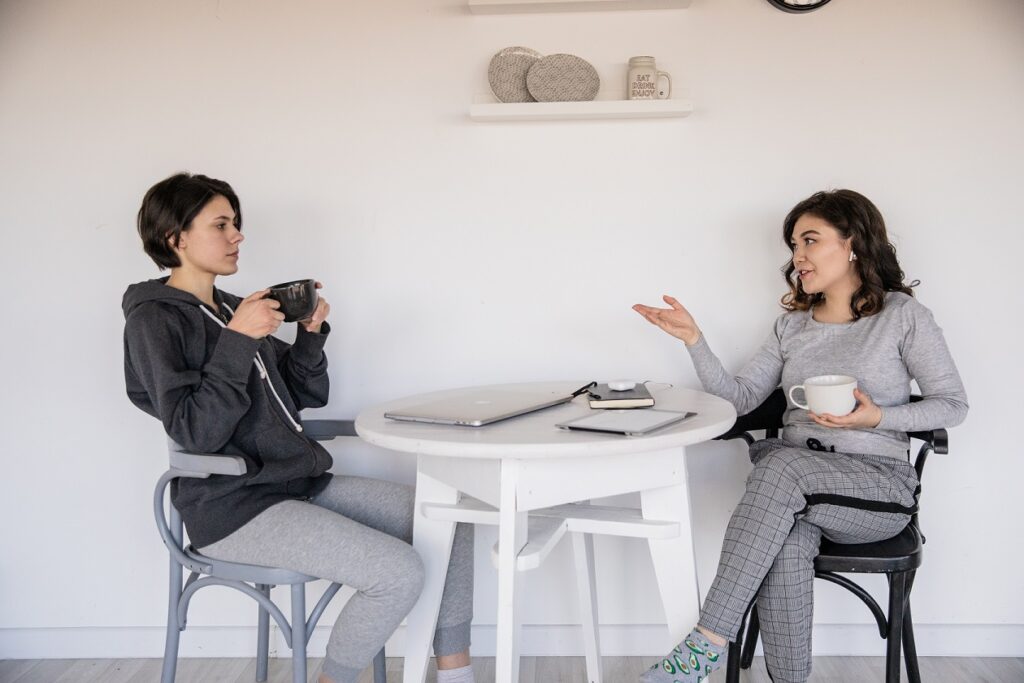A week or so ago, we addressed the warning signs of an unhealthy or potentially abusive relationship, and where an individual can seek help if they recognize such signs. Today, we focus on fostering healthy relationships through healthy communication. The tips you’ll read can be used with a significant other, friend, family member, or co-worker – especially now during the stresses of COVID-19 when maybe things are a bit more tense.
To quickly summarize, a healthy relationship has three main parts:
-
Awareness: respect for the other person and yourself, knowing your boundaries, understanding the relationship, and taking responsibility
-
Balance: working with the other person to balance wants and needs, taking time to practice self-care and re-energize
-
Communication: being clear and direct, communicating frequently, actively listening, sharing joys, and resolving conflict when needed
#3 – Communication – will be our emphasis, since really all aspects of a healthy relationship require frequent and active communication. If you’ve ever asked a couple who has been married for a long time what the key to their happiness is, usually one of the pieces they mention is communication. Communication helps us connect, express our needs and expectations, resolve conflict, and share joy. Clear communication and active listening is crucial for a relationship’s satisfaction and healthy bonding, clearing up misunderstandings, and keeping relationships healthy and thriving.
The most effect communication has two important aspects: It is clear, and it is direct.
Example of clear, direct communication: (Wife to husband) “I’m disappointed that you didn’t help out to get the kids ready this morning. I could really use some help”
Poor example: (Wife out loud) “Gosh, how hard is it to pull some weight every now and then? I have to do everything around here!”
Communication is direct if the person spoken to is the person for whom the message is intended. Clear communication occurs when the messages are spoken plainly, and the content is understood by the other person.

Other keys to effective communication are to:
-
Communicate frequently: One of the most difficult challenges facing relationships is finding the time to spend together and in meaningful conversation. Try talking in the car (without the radio or other distractions) or talking while going for a walk. Scheduled phone calls and/or video chats are also great ways to connect.
-
Be an active listener: Try your best to understand the point of view of the other person. Pay attention to verbal and non-verbal messages. For example, you can nod your head and say, “I understand,” which conveys that you care about what the other person is saying.
-
Be positive: Good communication does not mean only talking about the bad stuff. Good communication is also sharing jokes, complimenting each other, and encouraging one another.
-
Resolve conflict respectfully (no matter how great your communication, there is still bound to be disagreements):
-
Choose a calm, private environment to discuss.
-
Use “I” statements (“It is important to me that I have some privacy.” vs. “Leave me alone!”).
-
Set boundaries. If the other person yells, curses, or ridicules you, it’s OK to walk away and tell them that you will continue the conversation when you both are able to be calm and respectful.
-
Try to get to the heart of the matter. Arguments typically happen when one partner’s needs/wants are not being met. Talk about the real issue to keep little spats from continually popping up.
-
Compromise when possible, or agree to disagree.
-
Consider the big picture. Is this really an issue? Does it change how you feel about each other? Are your morals or beliefs being compromised?
-